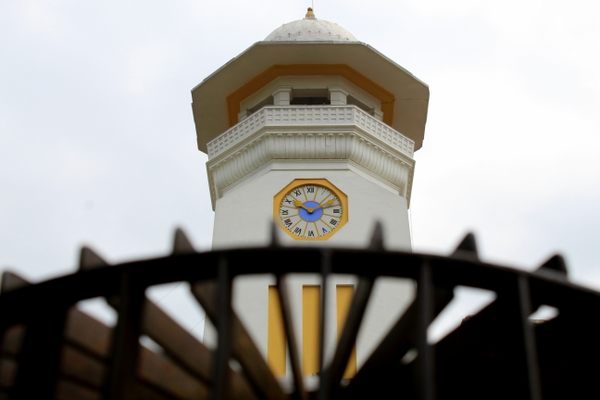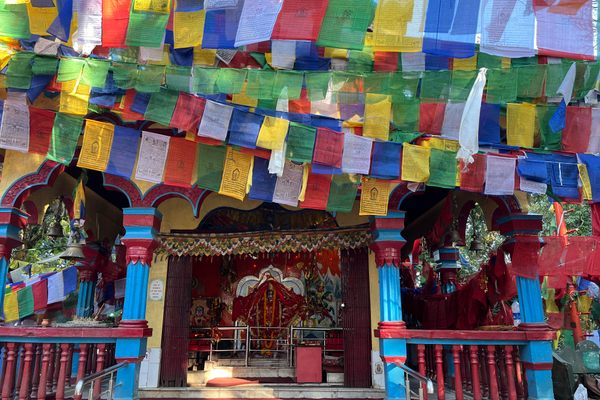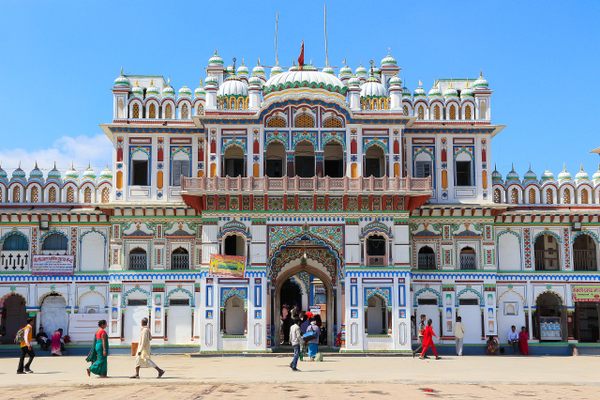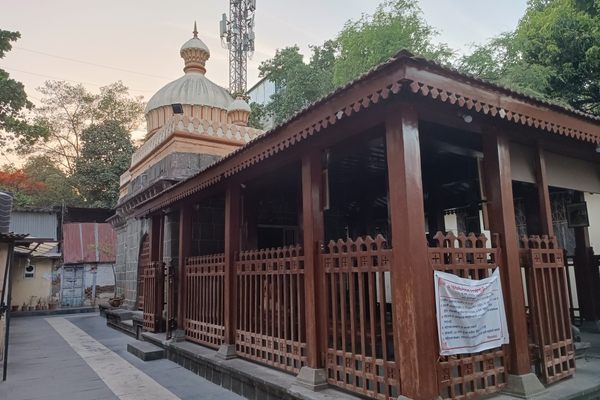AO Edited
Kumari Ghar
A brick building in Kathmandu's Durbar Square is home to Nepal's most prominent living goddess.
Every day visitors, tourists, and worshipers alike gather in the courtyard below the balcony of the Kumari Ghar, hoping to catch a glimpse of a living goddess.
The Kumari (literally “virgin”) is believed to be the reincarnation of the Hindu warrior goddess Taleju, a manifestation of Durga. Buddhists, on the other hand, believe her to be the tantric goddess Vajradevi. Nepal has several Kumaris, but Kumari Devi, or the Royal Kumari, is the most famous. Selected in early childhood from the Newar Buddhist Sakhya caste of goldsmiths and silversmiths, potential candidates are placed in a darkened room with freshly severed buffalo heads and dancing men wearing demon masks. It is believed if one candidate is not frightened, as most young girls surely would be, she is the next reincarnation of Taleju. Once chosen, she moves into the Kumari Ghar, where her feet will never touch the ground and she’ll only leave during specific festivals and religious duties.
Each day, however, she makes occasional appearances from her balcony where crowds below wait to see her. As soon as she begins menstruating, or loses blood from an injury, she reverts back to mortal status and re-enters society, as the selection process begins again.
The Kumari Ghar was built in 1757 by King Jaya Prakash Malla when he was overcome in guilt after offending the current Royal Kumari. In an act of atonement, he built her a new home. It was renovated in 1966.
Know Before You Go
The Kumari Ghar is located near the south entrance of Durbar Square in Kathmandu. The best time to see the living goddess is between 9-11 a.m. and 4-6 p.m. No photography or video is allowed of Kumari. There's a small entrance fee to visit Durbar Square, but no additional fee to visit Kumari Ghar.



















Follow us on Twitter to get the latest on the world's hidden wonders.
Like us on Facebook to get the latest on the world's hidden wonders.
Follow us on Twitter Like us on Facebook